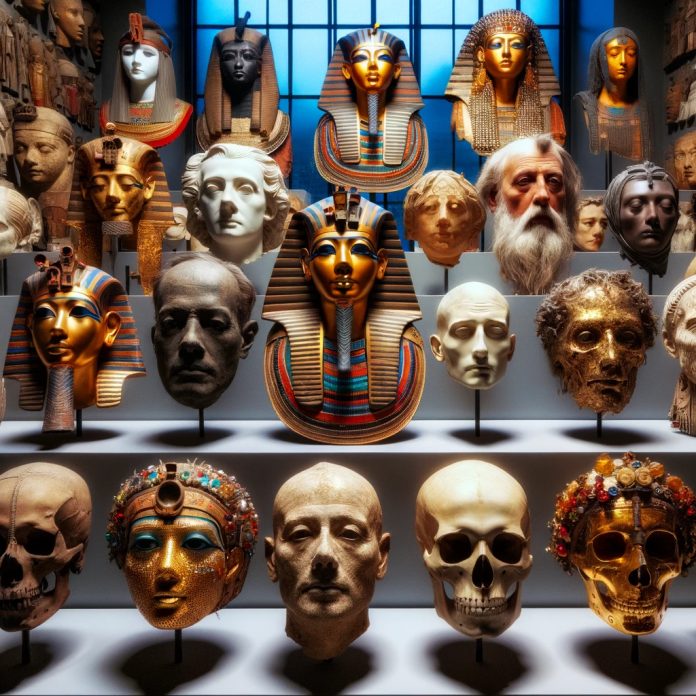Death masks, a historical artifact often overlooked, hold a profound cultural significance. These life-like representations of the deceased, created through a process of plaster casting, serve as a tangible link to our past. They offer unique insights into the customs, beliefs, and attitudes towards death in different societies.
The Historical Context of Death Masks
The tradition of creating death masks can be traced back to ancient times. The Egyptians, for example, believed in the concept of 'Ka', a spiritual double that needed a physical likeness to inhabit after death. This belief led to the creation of death masks, which were often made of gold and adorned with precious jewels.
Throughout history, the practice of creating death masks has evolved and varied across cultures. In Europe during the Middle Ages, death masks were primarily used as mementos of the deceased. However, during the Renaissance, they became a tool for scientific study, used to preserve the features of notable individuals for posterity.
The Process of Creating Death Masks
The process of creating a death mask begins shortly after a person's death. A layer of oil is applied to the face to prevent the plaster from sticking to the skin. Then, a mixture of plaster or wax is carefully spread over the face, capturing every detail. After the mold hardens, it is gently removed, resulting in a precise representation of the deceased's facial features.
Modern techniques have evolved to include the use of alginate, a seaweed-based product, and silicone, which provide a more detailed and accurate mold. Despite these advancements, the fundamental purpose of creating a death mask remains the same - to capture and preserve the likeness of the deceased.
The Cultural Significance of Death Masks
Death masks hold a profound cultural significance. They serve as a tangible link to our past, offering unique insights into the customs, beliefs, and attitudes towards death in different societies.
In many cultures, death masks were believed to contain the spirit of the deceased. They were used in rituals and ceremonies, often placed on altars as a form of reverence. In other societies, death masks were used as a tool for mourning, allowing loved ones to remember and honor the deceased.
Death Masks as Historical Artifacts
As historical artifacts, death masks provide a wealth of information. They offer a glimpse into the physical appearance of historical figures, many of whom lived before the advent of photography. For historians and anthropologists, these masks are invaluable tools for research and study.
Moreover, the artistic value of death masks should not be overlooked. The intricate detailing and craftsmanship involved in their creation make them a unique form of portraiture. They are a testament to the skill and artistry of the craftsmen who created them.
The Modern Interpretation of Death Masks
Today, the tradition of creating death masks is largely a thing of the past. However, their cultural significance continues to resonate. Contemporary artists and sculptors often draw inspiration from death masks, using them as a medium to explore themes of mortality and identity.
Moreover, death masks continue to captivate the public imagination. They are often featured in museum exhibits and cultural festivals, serving as a reminder of our shared human history and our enduring fascination with the concept of death.
The Future of Death Masks
As we move further into the 21st century, the role of death masks in our society continues to evolve. Advances in technology, such as 3D printing and digital scanning, have opened up new possibilities for the creation and study of death masks.
Despite these changes, the cultural significance of death masks remains. They continue to serve as a powerful symbol of our mortality, a tangible reminder of our past, and a fascinating artifact of our shared human history.


-banner.png)





